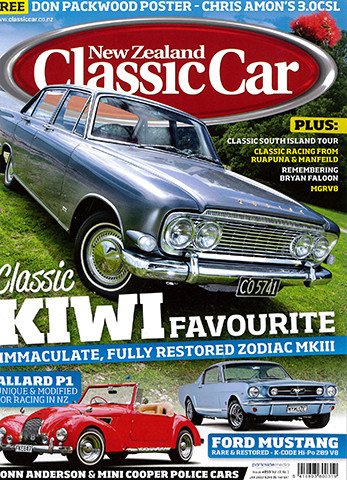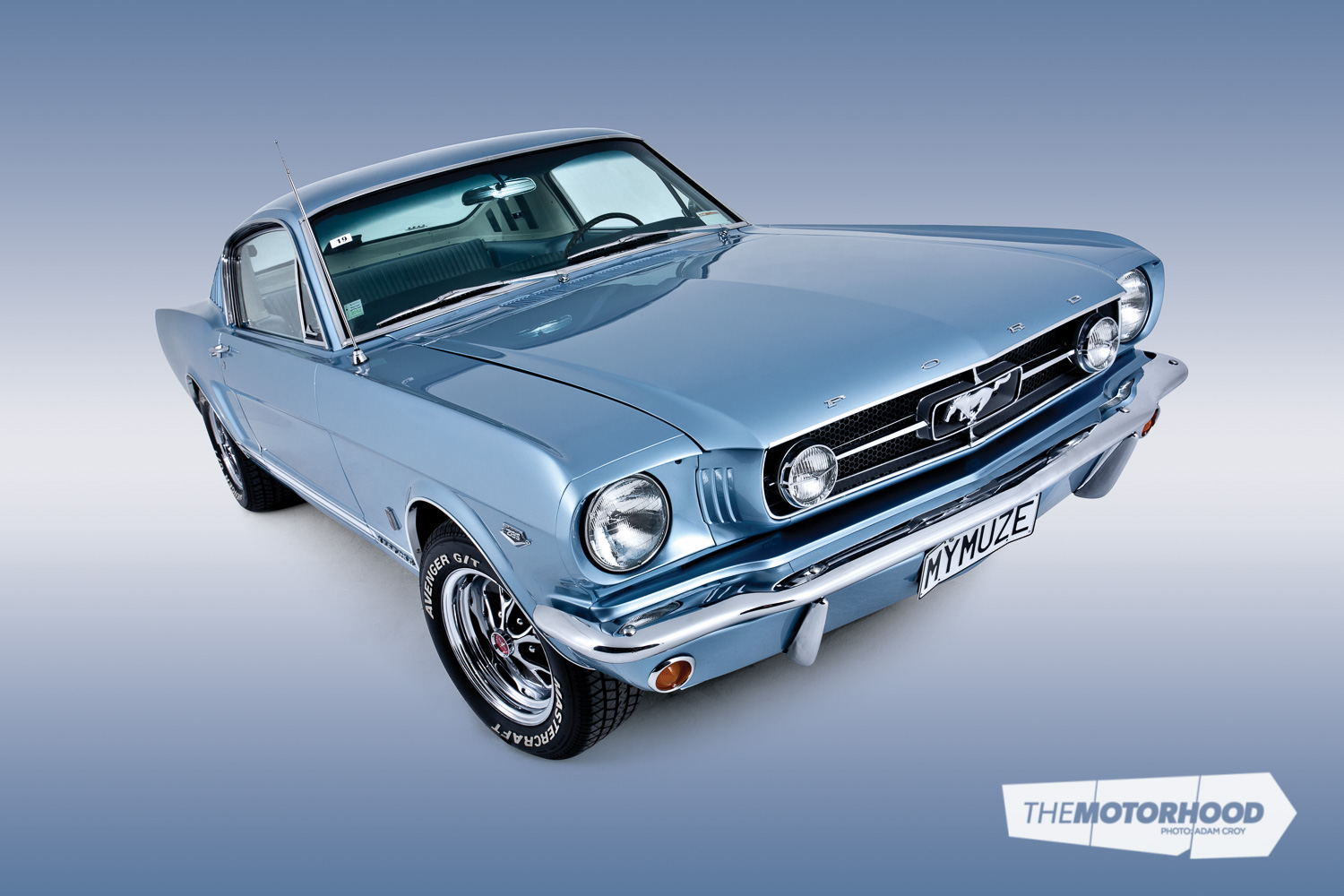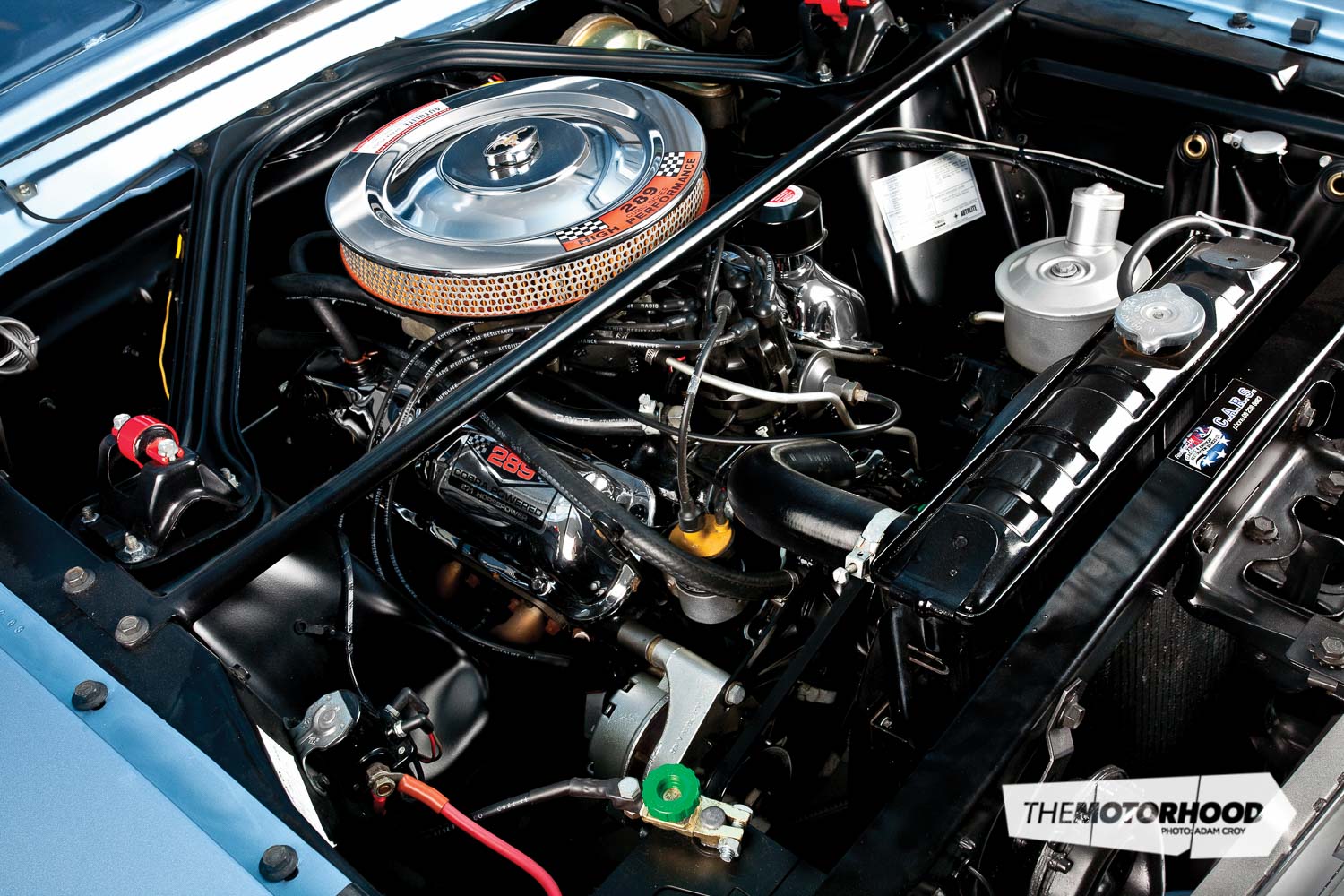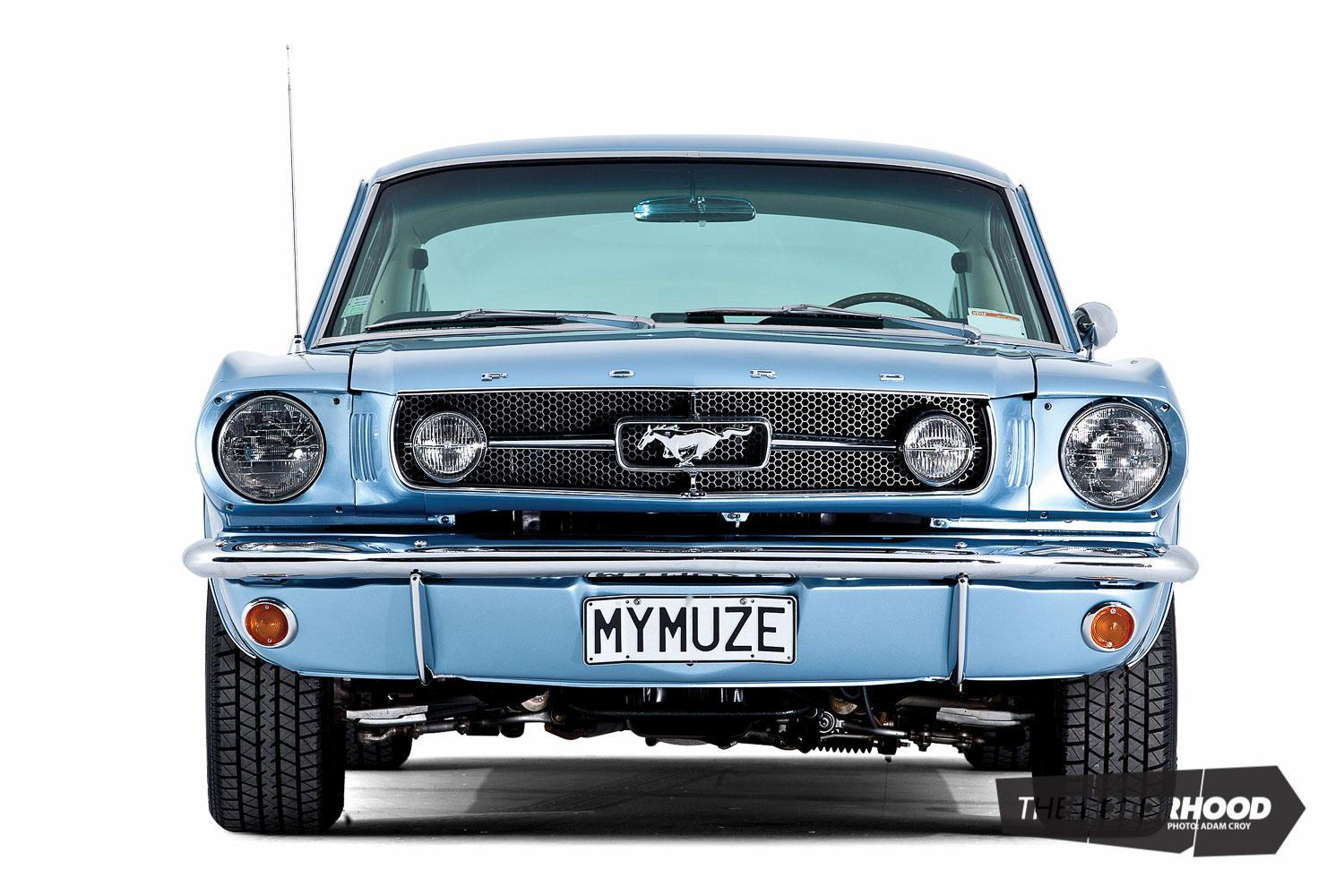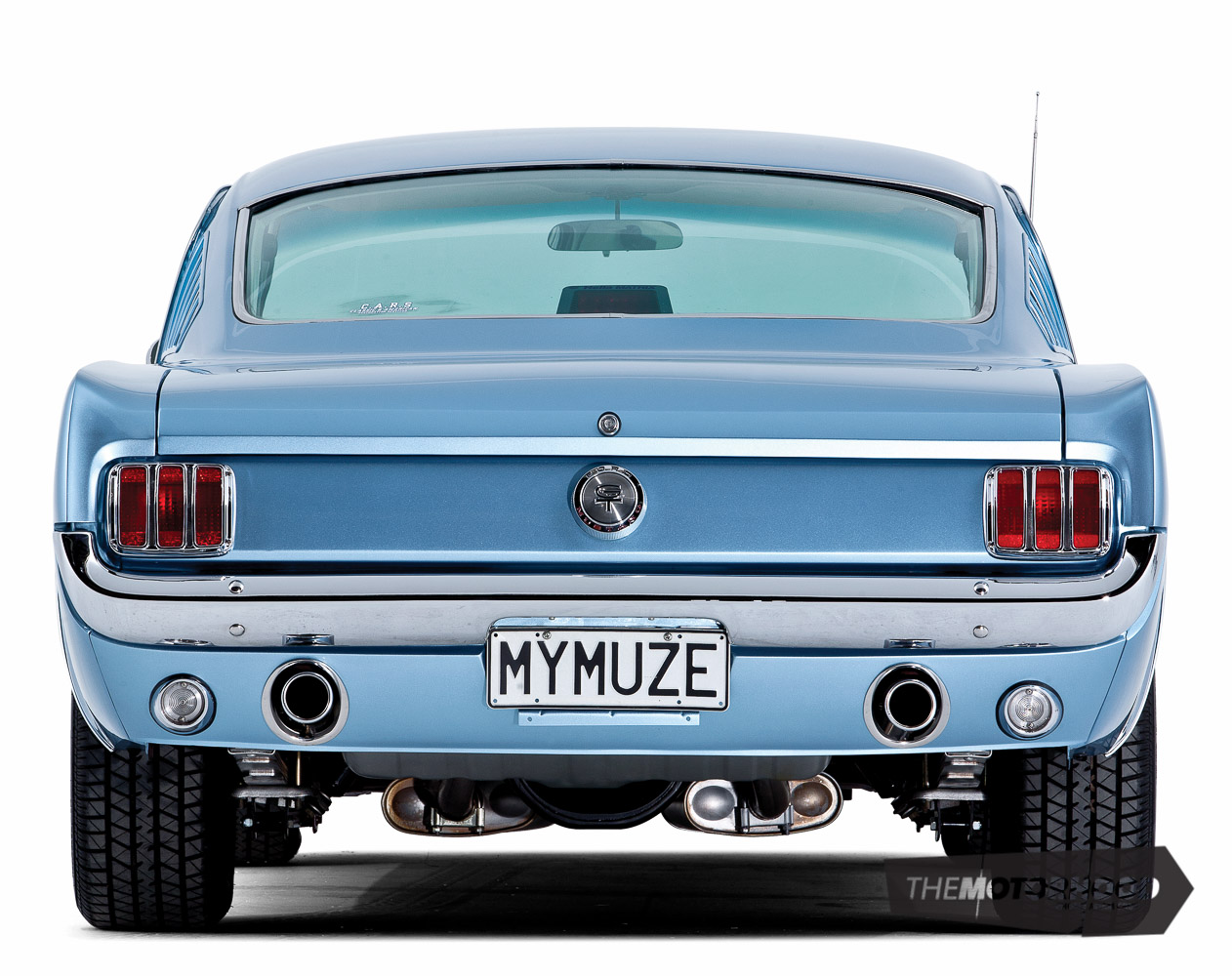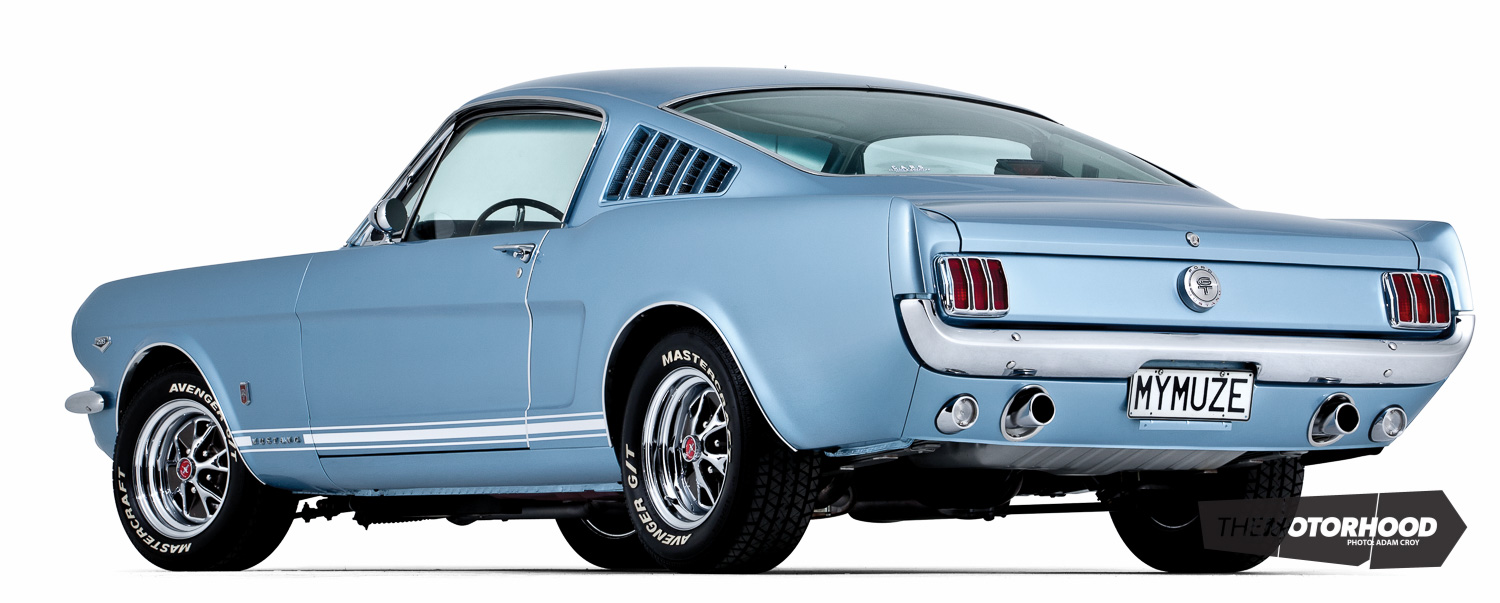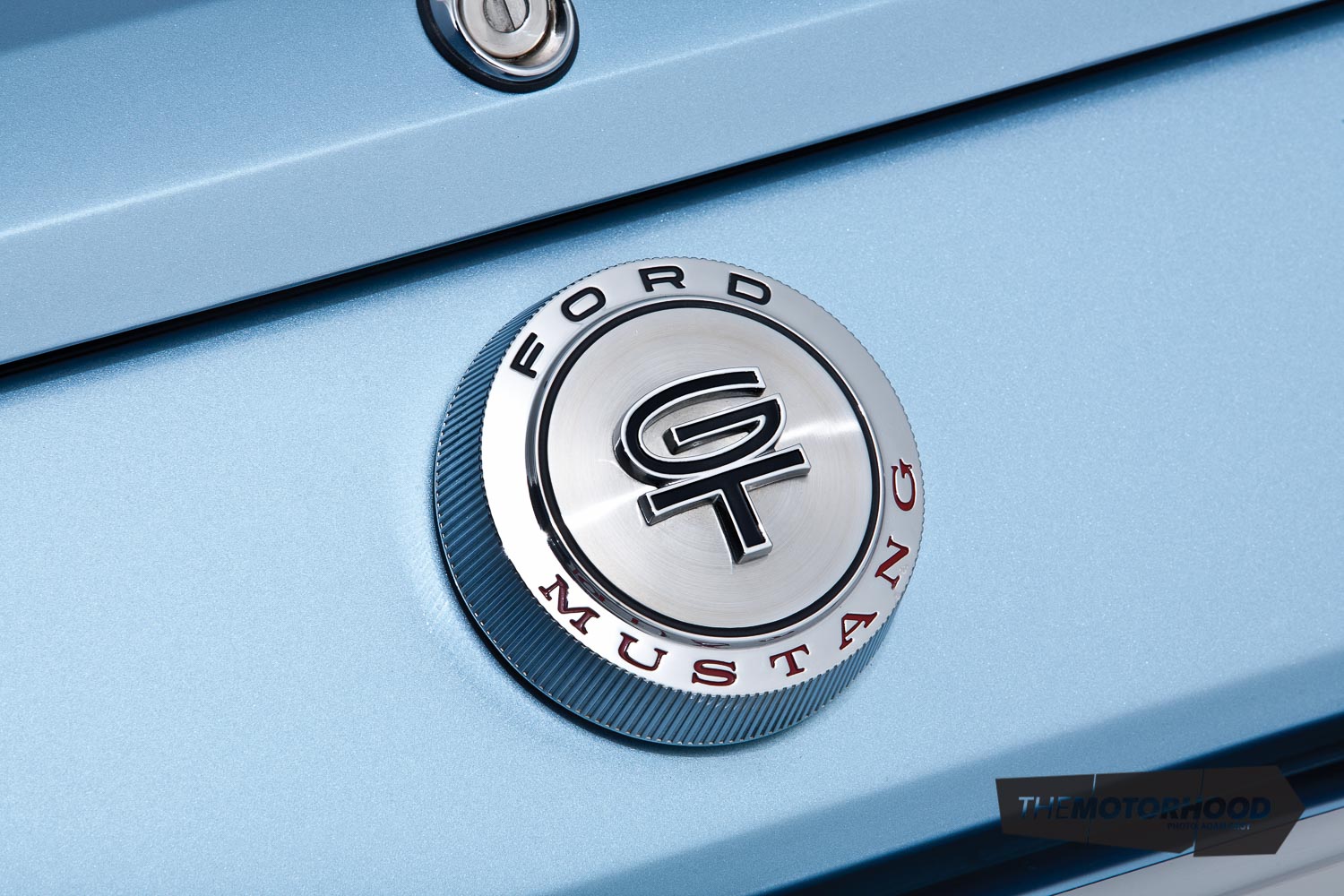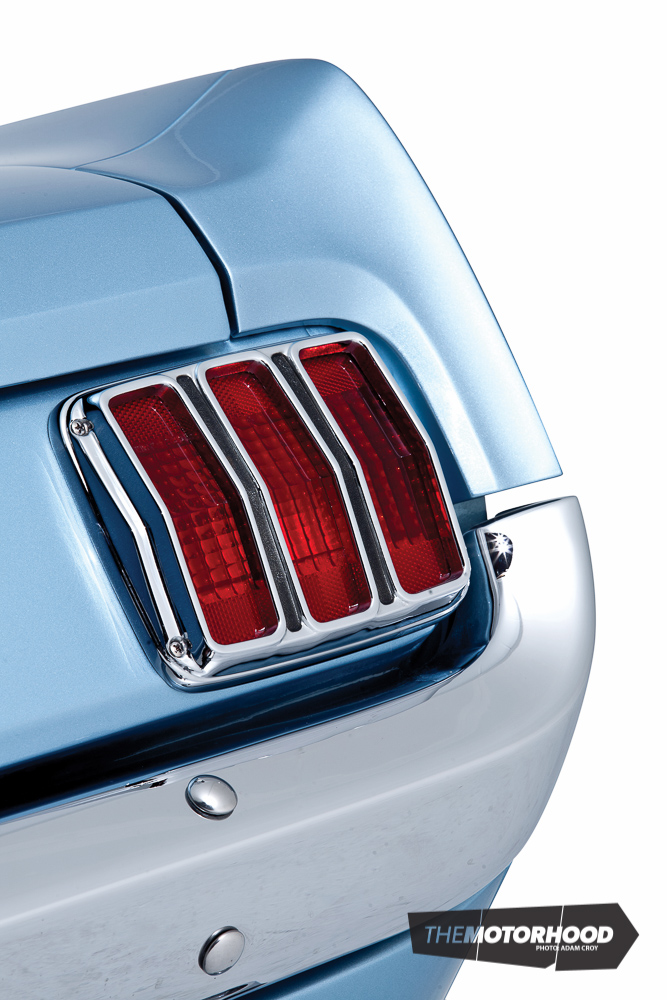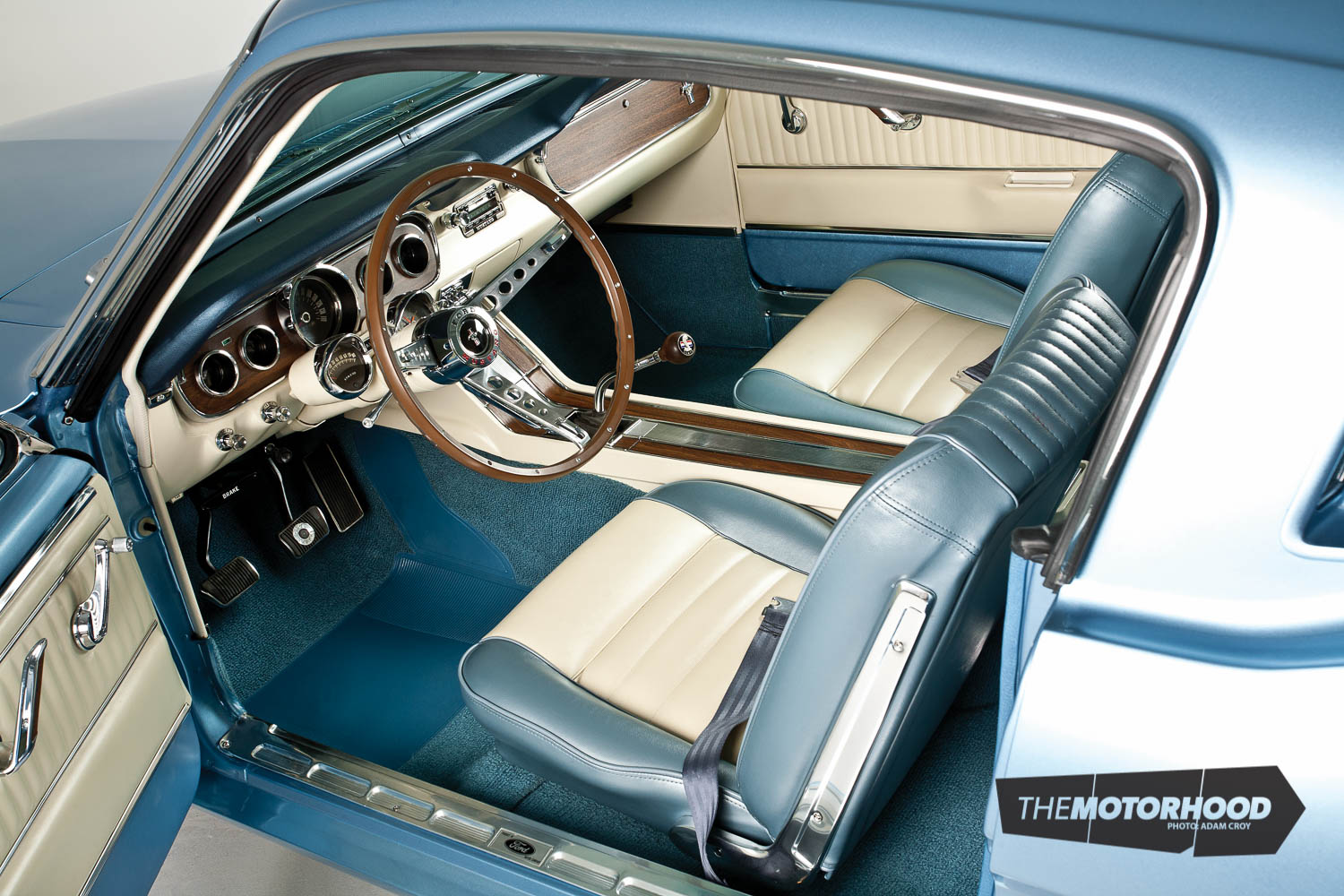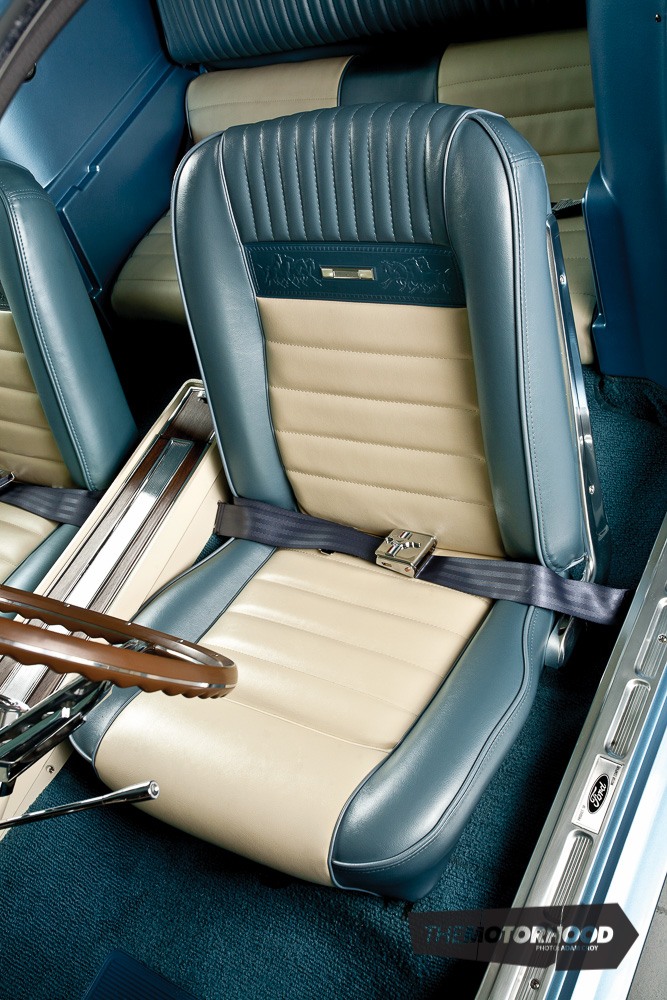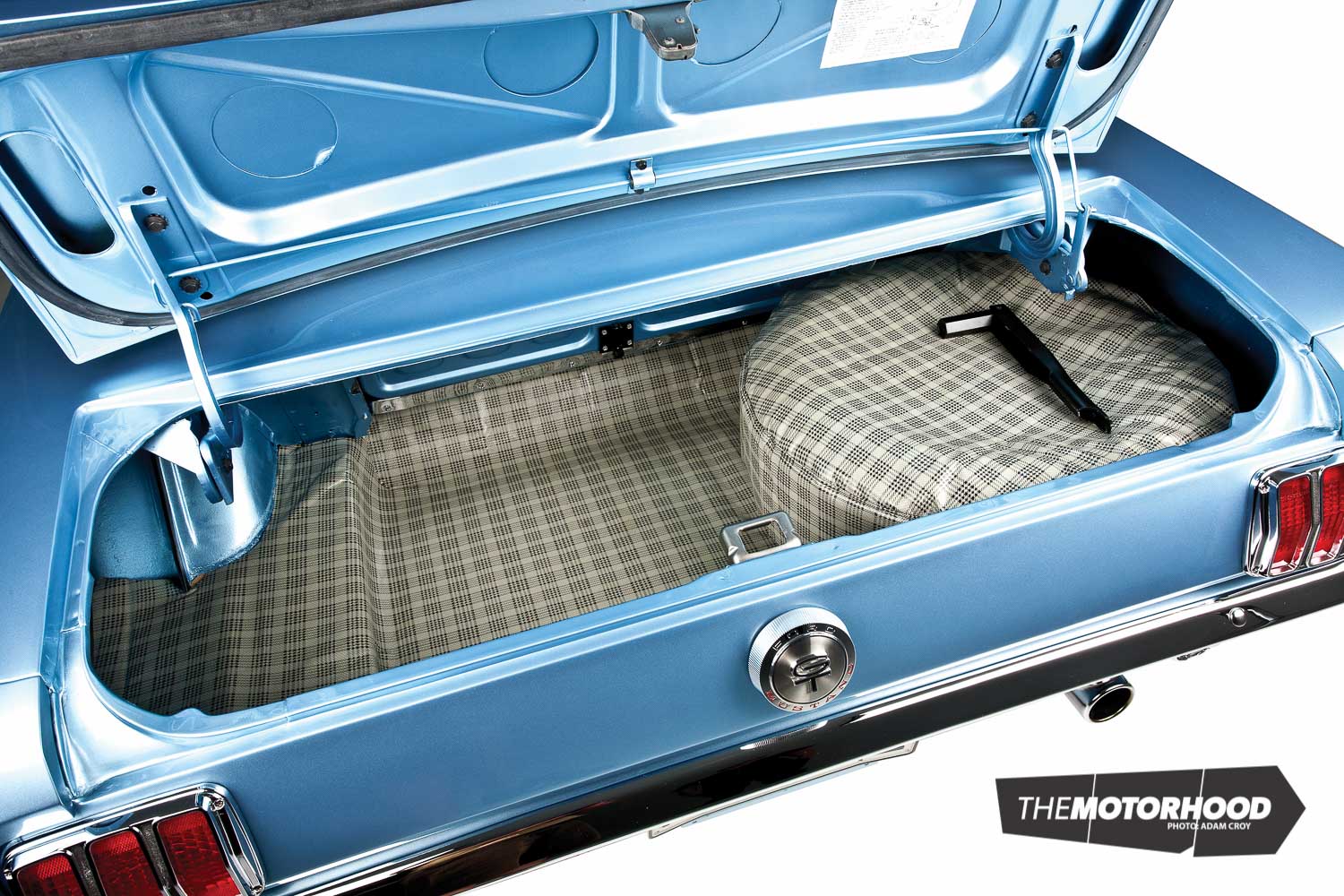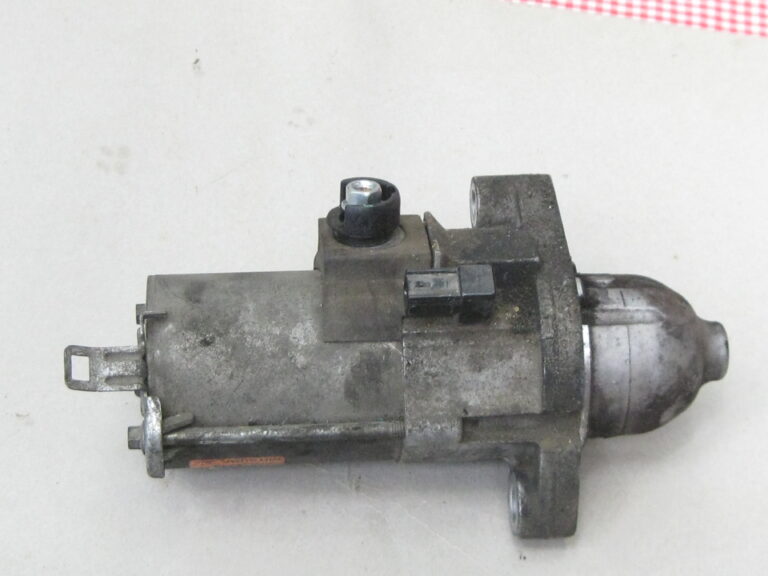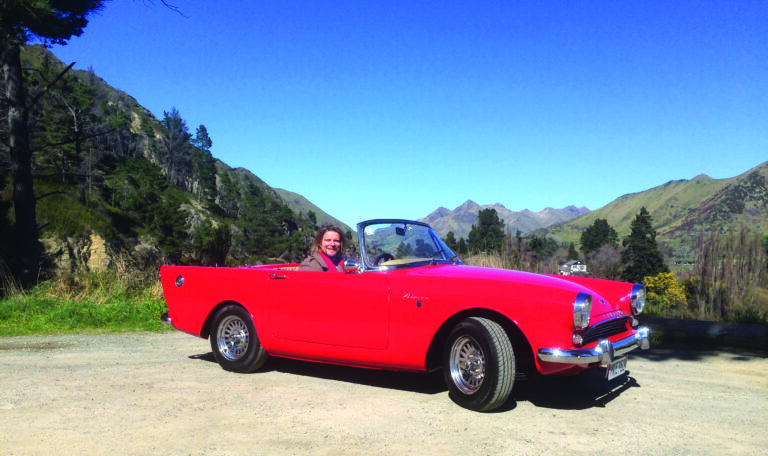data-animation-override>
“Ashley Webb tracks down a rare, K-code Hi-Po 289 V8-engined Mustang”
Originally conceived as a ‘working man’s Thunderbird’, the Ford Mustang would have to be one of the most desired, if not the most desired, American cars on the planet. The first Mustang rolled off Ford’s assembly line back in 1964, and Mustang mania swept through the USA after the fabled pony car went on sale April 17 of that year. Across the USA Ford dealers took a mind-boggling 22,000 orders that very first day and, in fact, interest ran so high that in Garland, Texas, the winner among no less than 15 bidders for the same car insisted on sleeping in the dealership overnight, in the car, until his bank cheque was cleared the next day.
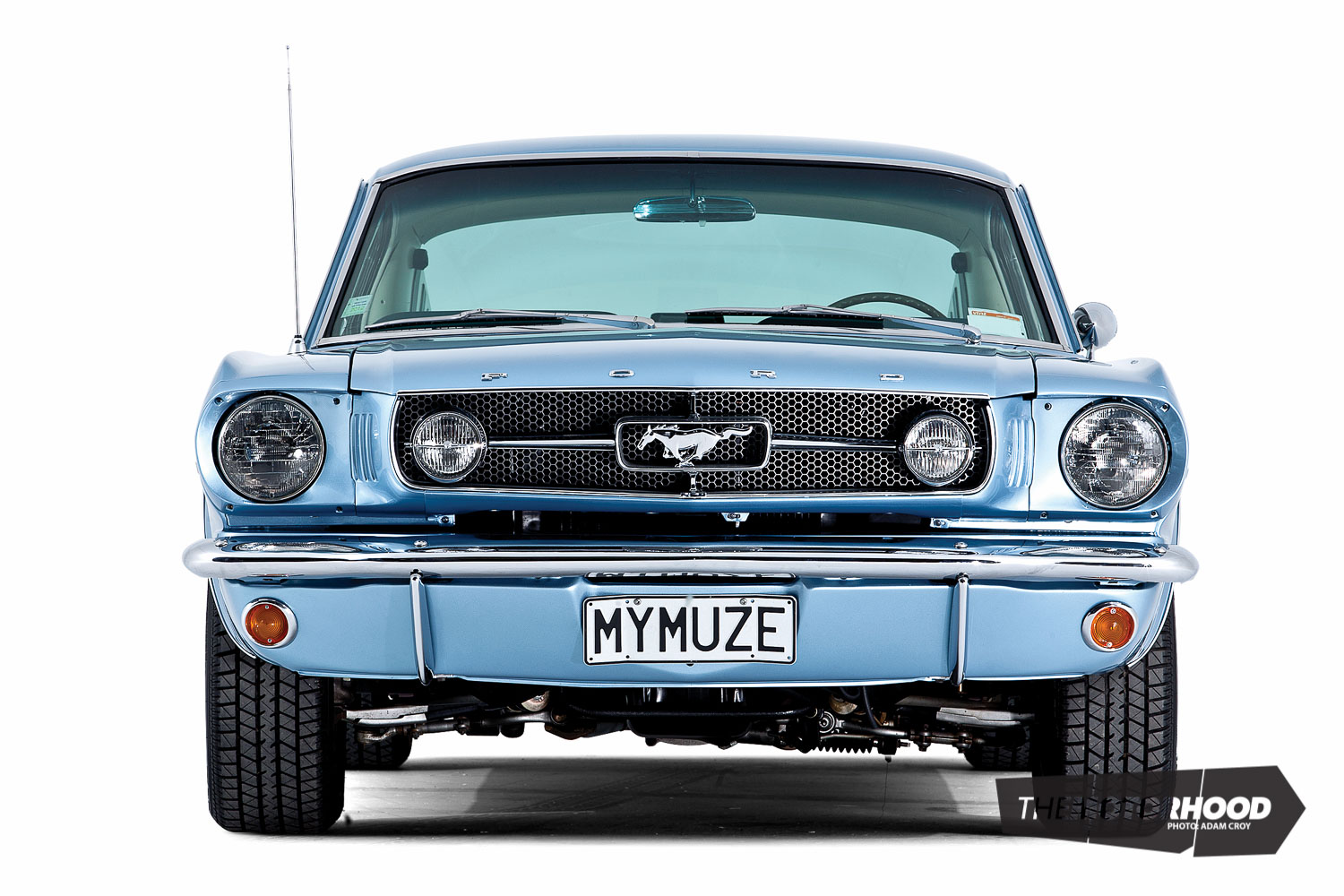
The suits at Ford had obviously hit the nail on the head, with Mustang clocking up an amazing world-record sales of 418,812 in its first year on the market, more than four times the expected sales of 100,000. Popularity amongst Ford enthusiasts had indeed reached an all-time high and within three years an estimated 500 Mustang Clubs had formed across the USA alone.
Fast-forward to today and it’s no surprise that the Ford Mustang continues to capture the spirit and look of the original with today’s technology including numerous safety, convenience and comfort features. It’s also no real surprise that prices of US muscle cars have increased in recent years, as global demand by baby boomers purchasing their dream cars continues to grow – especially in countries such as China and Russia – despite recent worldwide economic woes.
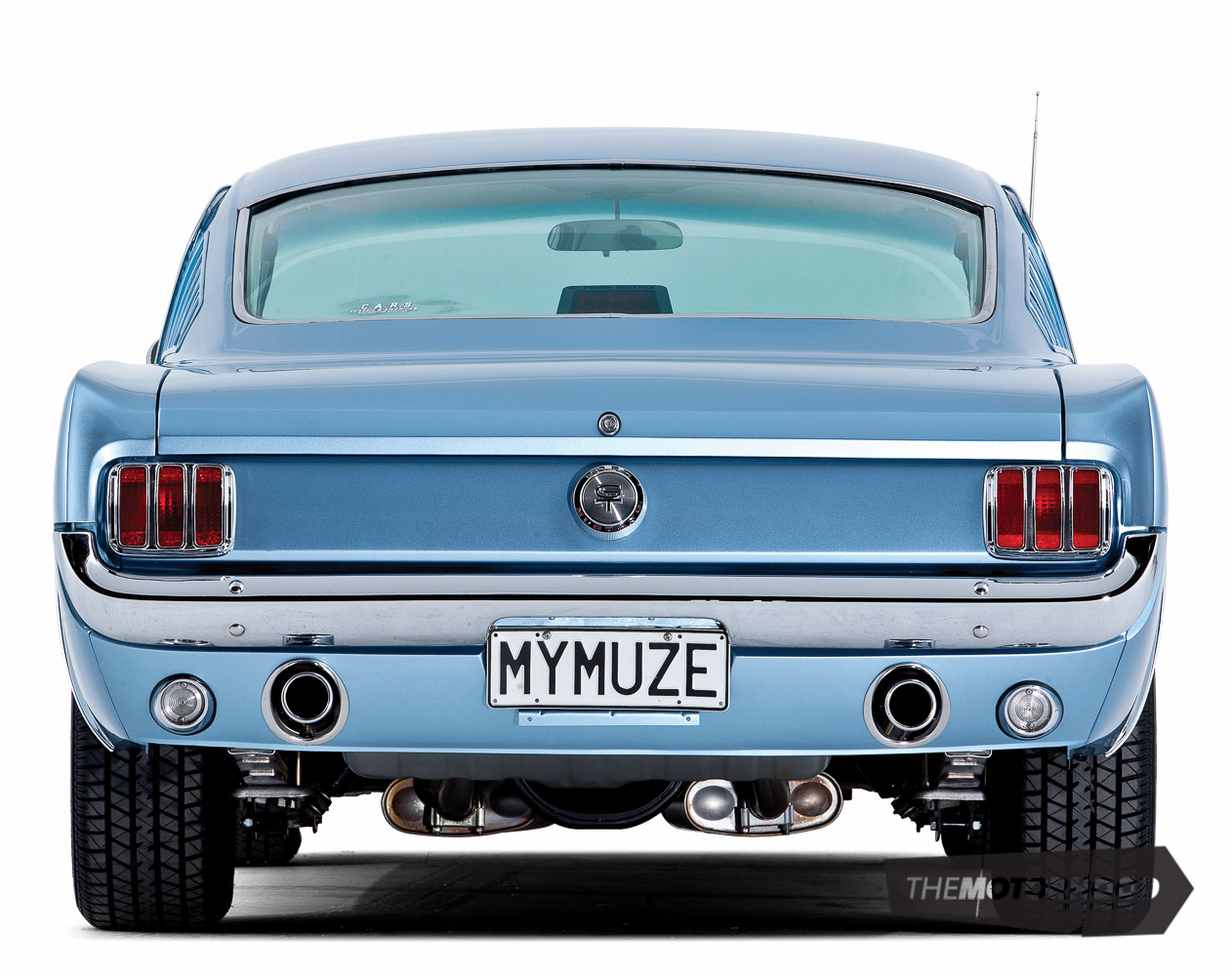
What makes the Mustang so attractive is the vast array of performance and body style options that were available at the time, particularly through the muscle car period of the mid-1960s to early ’70s. Ironically, though, the Ford Mustang never fell into the category of a true muscle car, which is defined as a high-performance vehicle — generally a mid-size car with a large, powerful engine (more often than not, a V8) and unique trim, intended for maximum acceleration on the street or drag strip, predominantly of American origin, and produced between 1964 and 1971.
Muscle cars are distinguishable from sports cars, which are typically smaller two or two-plus-two seaters or GTs, intended for high-speed touring and possibly road racing. High-performance full size or compact cars are excluded from this category, as is the breed of compact sports coupés inspired by the Ford Mustang, typically known as Pony cars, although few would dispute a Boss 429’s credentials – or indeed, a high-performance K-Code such as our featured Mustang — as a muscle car.

Blue-blooded
Doug Sankey’s passion for cars started as soon as he could drive. He has always liked Fords, his first car being a MkIII Cortina, and has since owned a German-assembled Ford Capri, Aussie-assembled MkIV Cortina, XC Fairmont and XF Fairmont.
Doug also had a passion for the fastback model of Mustang, but when the opportunity arose to purchase one he was assured by Mustang guru Wayne Lack that he “couldn’t afford” the particular one he had spotted in Wayne’s shed, so when in 2003 Doug and his wife Debbie purchased their first Mustang, it was a more affordable 1966 notchback from Wayne.
During the next two years, the Mustang was fully restored. That meant a complete back-to-bare-steel strip-down by Doug’s younger brothers Steve and Malcolm, who at the time were joint owners of Matamata Panelworks. All restoration work was completed by local Matamata businesses and it was finally finished off in a stunning Ferrari green paint scheme.
Only days after the restoration was completed, Doug and Debbie’s 1966 notchback was taken to its first show, the 2005 National Mustang Convention in Auckland, and was awarded second place in its class.
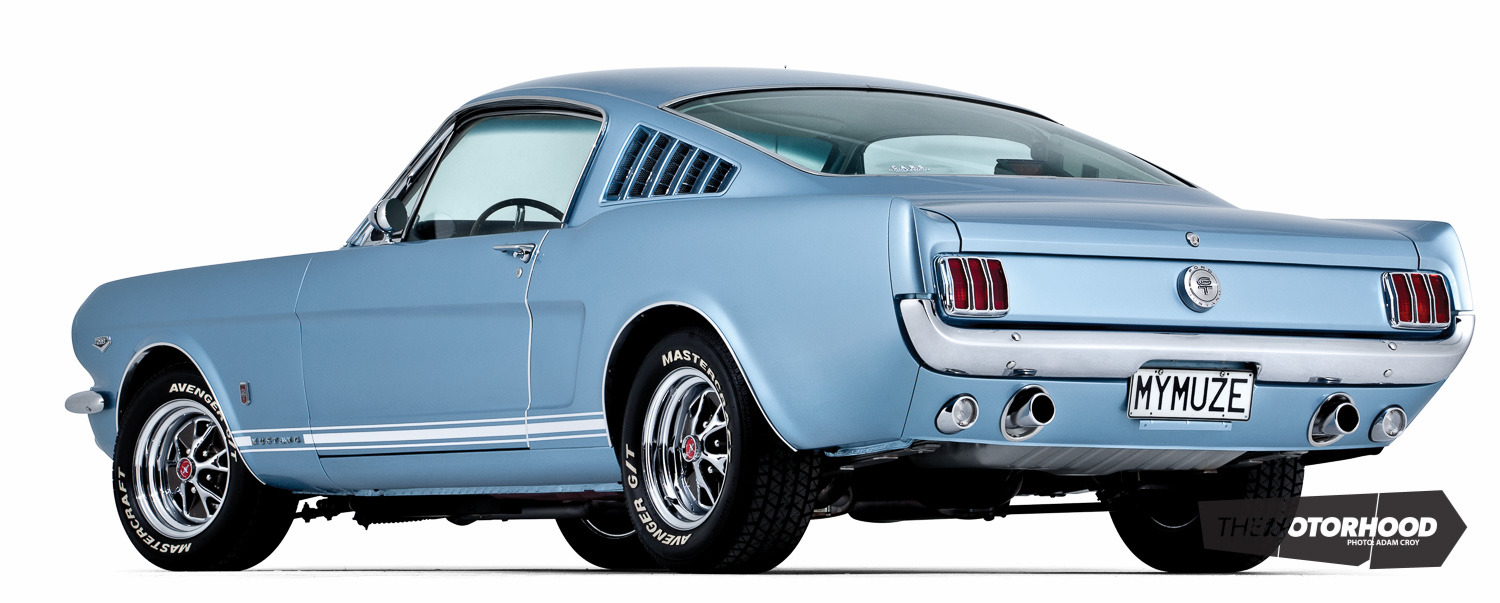
In 2006 it was again entered into the National Mustang Convention, this time in Palmerston North, where it was awarded first place in its class.
In 2007 Doug and Debbie were approached by the Auckland Mustang Owners’ Club, of which they were members at the time, and asked to enter the Mustang into the teams event at the NZCC/Ellerslie Intermarque Concours D’Élégance. This prestigious show is one of New Zealand’s premier classic car events, held in Auckland every year for all makes and models of classic cars.
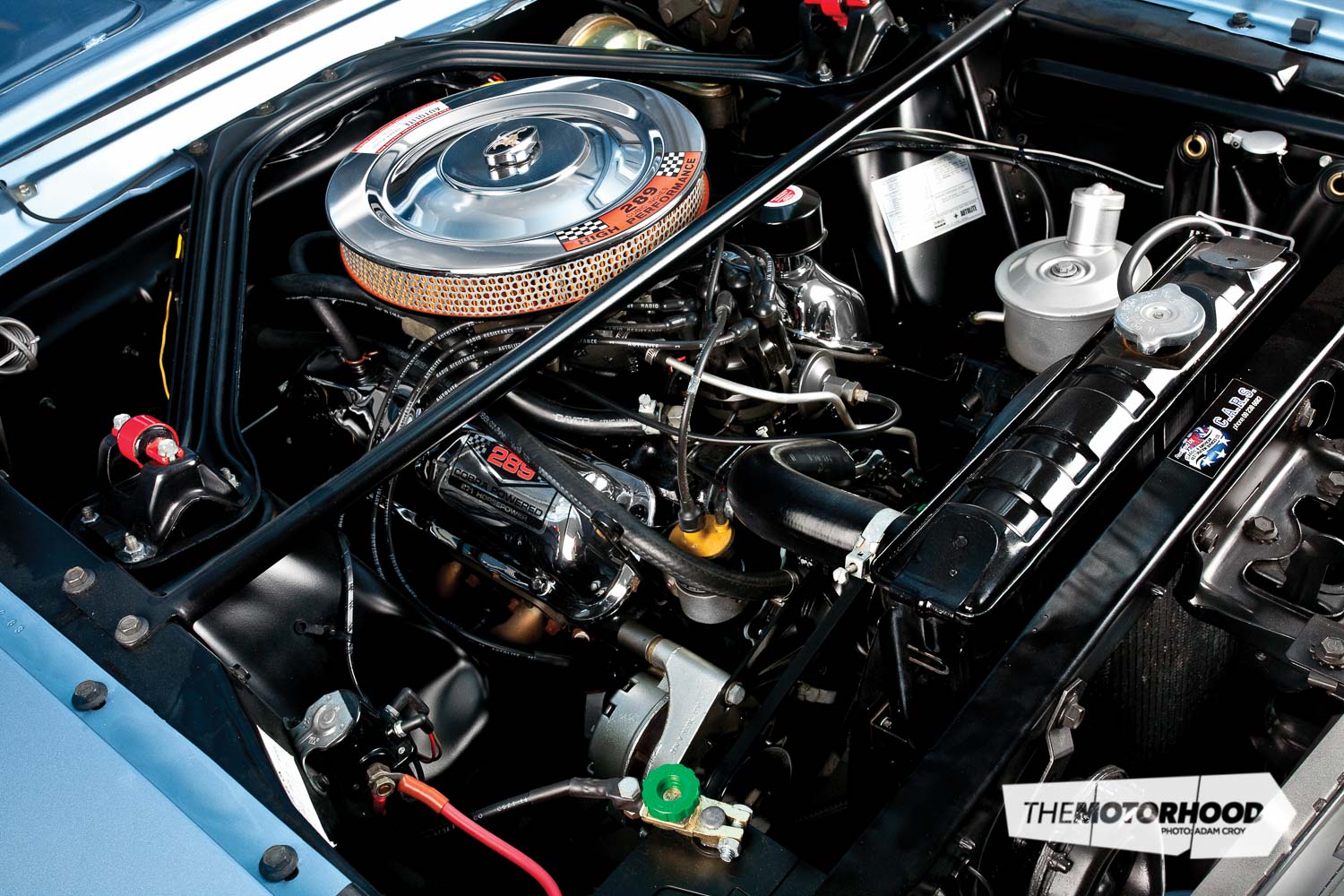
They duly entered, along with close friends Frank and Lynda Parker with their exquisite 1966 fastback, a car Doug had always admired and dreamed of one day owning. The cars went on to win third place in the coveted Teams Event. At the time Doug’s stunning Mustang notchback was not for sale, but when he was approached by a passionate and somewhat tenacious Mustang admirer who offered him a price too good to refuse, the Mustang was duly sold.
Having finally moved on from the emotional pain caused by parting with his Mustang notchback, in 2007 Doug was offered the opportunity to purchase a rare and genuine 1965 K-Code Hi-Po 289 V8 Mustang. After much begging and cajoling, wife Debbie finally gave in and a new baby was added to the Sankey family. Ironically, this vehicle happened to be the same fastback that Doug had admired in Wayne Lack’s shed some four years earlier, having not realised back then that it was a rare K-Code.
Doug and his brother Steve picked up this new addition from an old shed it had been stored in for a number of years and took it back to Pukekohe, where they completely stripped the vehicle back to bare steel in preparation for a full rotisserie rebuild. A two-year-long project had begun.
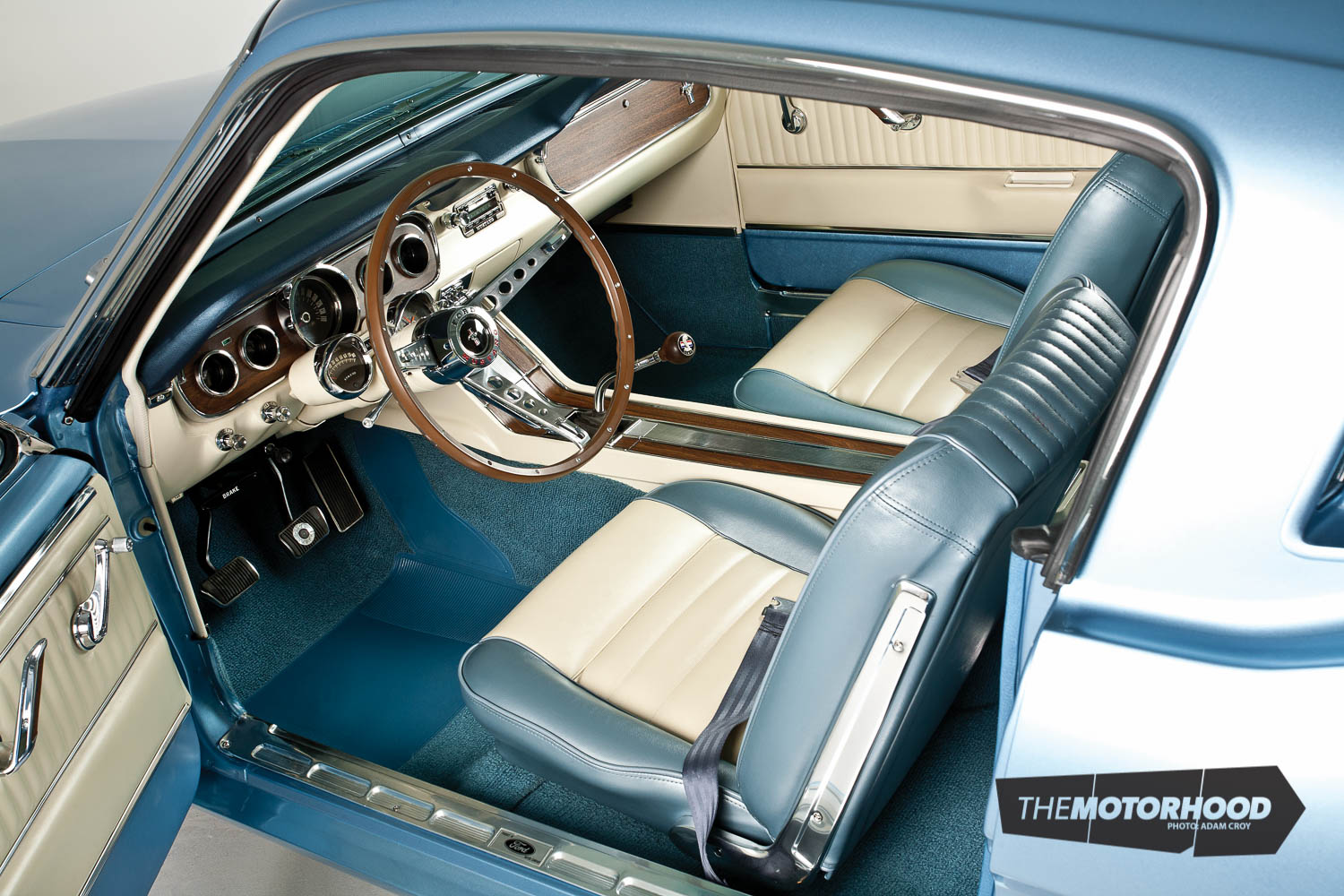
According to Doug, it’s believed the old Mustang had been stolen at least three times during its life in the USA and was imported into New Zealand in a rather sad and sorry state as basically a bare shell, however, it was exactly what he was looking for.
Steve, Doug’s brother, was now operating from his own workshop, CARS (Classic & American Restoration Services Ltd) in Pukekohe, and started working on the vehicle’s shell, with Doug joining in on weekends and when his understanding boss and patient and loving wife and children allowed him time away. The body was totally stripped back to bare steel, put on a rotisserie and sandblasted, which uncovered some nasty history from what appeared to be damage caused by racing and drag racing earlier in its life.
The chassis and body repair work was typical of the era and required Steve’s magical touch to bring it back to life. The body was then placed on a chassis machine and pulled straight before the extensive task of repairing the rust commenced, which included the addition of new floor panels, boot floor panels, rear panel, boot lid, a rear guard, front chassis rail, firewall, repairs to the cowl panel and rust removal from both doors.
The front suspension also received a complete makeover, receiving new ball joints and a larger diameter sway bar finished off in satin black and silver exactly to factory specs. The factory differential was fully reconditioned along with the factory original K-Code discs and drum brakes.
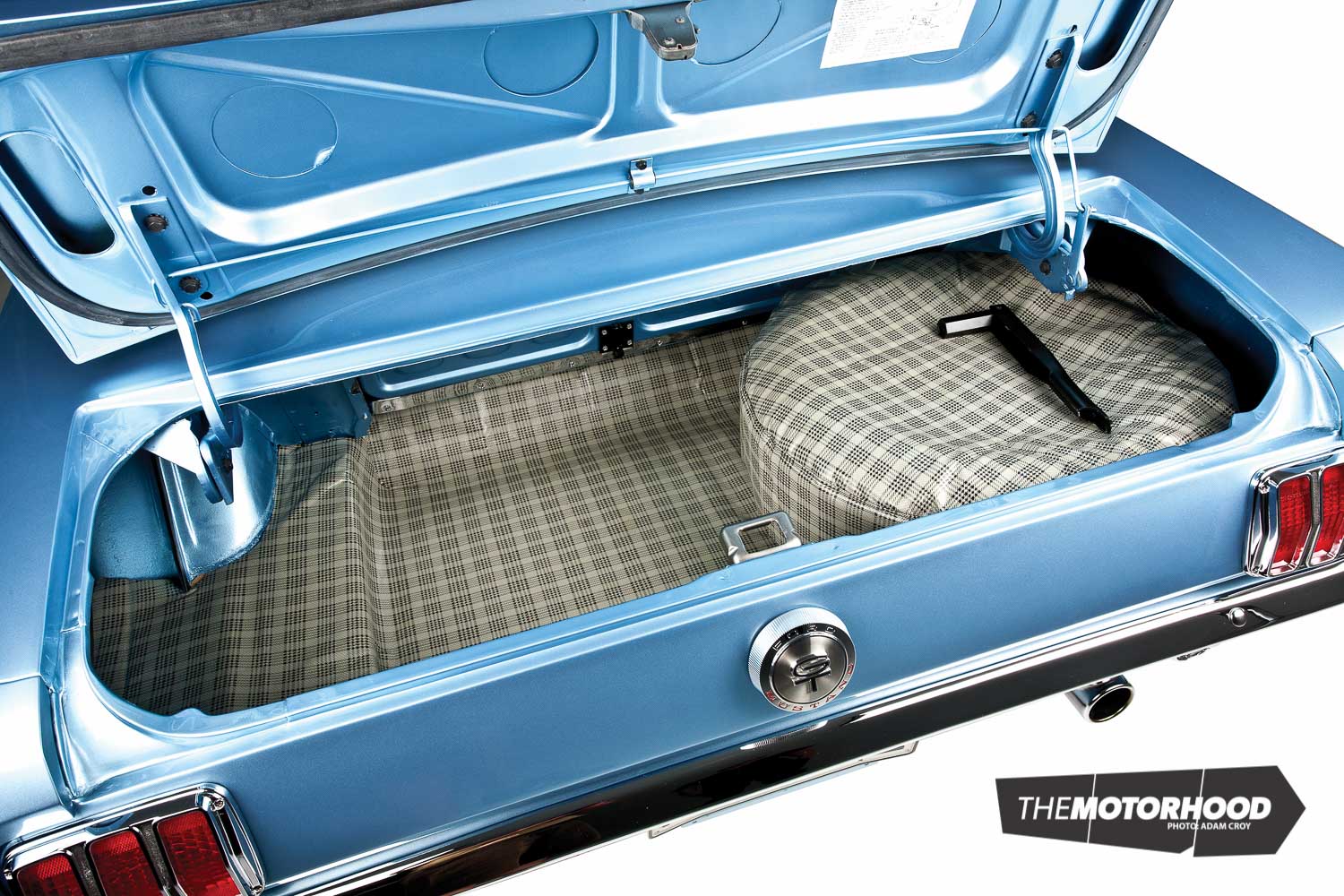
Andy Duffin, who worked at Dennis Syverston Painters Pukekohe at the time, artfully and skilfully applied the glorious pale blue exterior paint, called Silver Lakes. Andy now operates from his own workshop, RE Paints in Pukekohe. Bill Fryer at Meads Auto Trimmers in Matamata installed the matching light blue and white deluxe interior complete with Pony trim.
Well-known Mustang expert Wayne Lack treated the engine to a total rebuild to original K-Code specs with the exception of Tri-Y exhaust headers. Incidentally, the K-Code engine was jammed pack full of internal high-performance goodies from the factory, including such items as 28mm main caps, instead of tapering to 16mm (15/16-inch to 5/8-inch); connecting rods with heavier bolts and nuts; a crankshaft with a unique hatchet and counterweight; a mechanical camshaft; solid lifters; aluminium flat top pistons; and a specially-designed narrow timing chain.
From the outside any blue-blooded Ford fan can quickly recognize the external K-Code tell-tale signs such as screw-in rocker studs and cast spring seats in the cylinder heads, which also have the numbers 19, 20, 21 cast into them; the same intake manifold as the A code 4V engine; a Venturi 600cfm, manual choke carburettor; exhaust manifolds with a different design for better air flow; a four blade fan; a larger pulley on the alternator; and chrome rocker covers. The 289 block is identical to that used for the 65/66 A- and C-Code engines.

Blue creation
Looking at this beautiful Mustang one can be forgiven for thinking a lot of sweat, tears, and no doubt some blood must have gone into the rebuild of this vehicle, and the skill and attention to detail certainly shows in the finished item. The judges of the Auckland Mustang Owners’ Club would seem to agree, as at their 2011 annual car show they awarded the vehicle the Best Panel and Paint trophy and second place in the GT division.
Doug has already moved on to his next project, a 1932 roadster, which he keeps at home in his shed. He is challenging himself to completely build it, on his own, from the ground up. His engineering background is proving valuable.
With the K-Code, Doug and Debbie certainly have a rare and unique racehorse in their stables. When asked if he would ever part with this particular baby, “if the price is right, anything is possible,” was the response.
Doug and Debbie Sankey acknowledge the huge amount of time that CARS put into the K-code. Their patience, passion, and professionalism to this project made it the exceptional Mustang it is today.
1965 K-code Hi-Po 289 V8 Mustang
- Engine: Ford V8
- Capacity: 4736cc (289ci)
- Bore/stroke: 102.5×73.5mm
- Valves: Two valves per cylinder/ohv
- Fuel system: Venturi 600cfm, manual choke carburettor
- C/R: 10.0:1
- Max power: 202kW (271bhp) at 6000rpm
- Max torque: 423Nm (312lb/ft) at 3400rpm
- Transmission: Four-speed manual
- Suspension: F/R – coil springs/solid axle with leaf springs
- Steering: Recirculating ball, optional power assist
- Brakes: Disc/drum
Dimensions:
- Overall length: 4613mm
- Width: 1732mm
- Height: 1297mm
- Wheelbase: 2743mm
- Kerb weight: 1360kg
Performance:
- 0-100kph: 6 seconds
- Standing 1/4 mile: 14 seconds
This article originally appeared in the January 2012 issue of New Zealand Classic Car. Grab a print copy or a digital copy of the magazine now:
